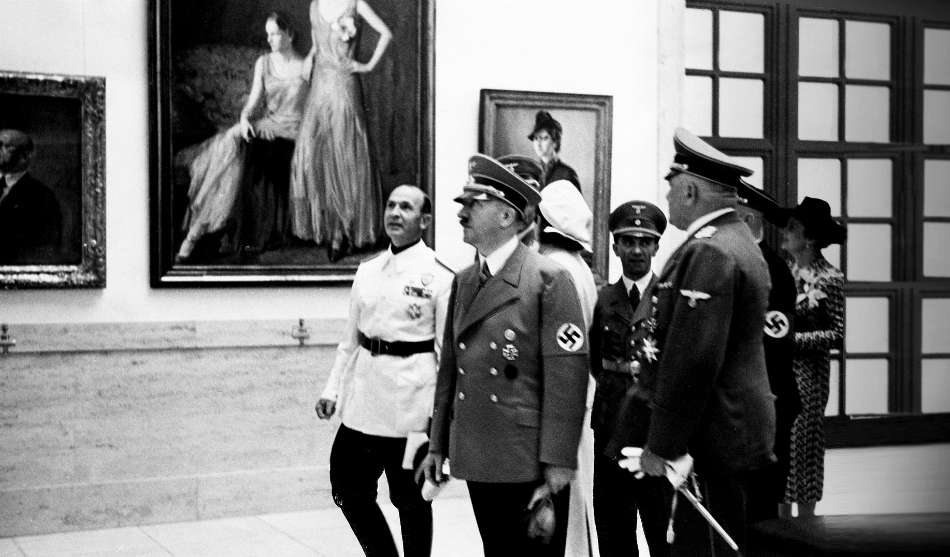Franz von Stuck was a German symbolist painter, his dark and intriguing paintings earned him much respect and fame in his lifetime, however, it is one of his paintings in particular that may have had the most influence on human history.
The Wild Chase is a dark, grim and somewhat unnerving portrait that depicts the Germanic god Wotan, the highest of the Germanic Gods. Wotan is seated on horseback leading a parade of the dead. Almost anyone today will look at the figure of Wotan and immediately recognise his resemblance to Adolf Hitler. The fact that the painting was completed in 1889, the same year that Hitler was born, has added fuel to the theory that this artwork somehow prophesies the rise of the infamous dictator.
But rather than Stuck being able to somehow foresee the future, the truth is that instead it is the painting that Hitler modelled himself on. Hitler was a huge fan of Stuck’s work, and was fascinated with his paintings even from childhood. The young Hitler first glimpsed this painting aged 13 and would later have it displayed in his own gallery.
It has been said that Hitler copied his hair, mustache and even his oratorical style from the painting. It is no surprise then that when the Nazi’s came to power Stuck and his paintings, rooted in Germanic mythology, were upheld as a prime example of Germanic values. So although the idea of Stuck’s painting being prophetic is a little farfetched, it does demonstrate the immense influence art can, unknowingly, exert upon the world.
For more intriguing stories from history, pick up a copy of All About History today.

